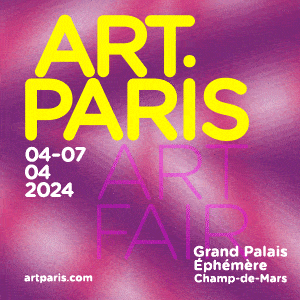Whitehot Magazine
April 2024
"The Best Art In The World"
"The Best Art In The World"
April 2024
June 2013: Yoko Ono: Arising a call for Women - the Whitehot Magazine Interview
 Yoko Ono and curators Carol Rolla and Sarah Gold. Copyright Yoko Ono, Courtesy Rene Rietmeyer
Yoko Ono and curators Carol Rolla and Sarah Gold. Copyright Yoko Ono, Courtesy Rene Rietmeyer
Yoko Ono: the Whitehot Magazine Interview
Yoko Ono: Arising a call for Women
at Palazzo Bembo
1 June – 24 November 2013
by Vanessa Saraceno
On June the 9th , Yoko Ono presented her new work Arising in Venice. As part of the exhibition Personal Structures, organized by Global Art Affairs, the new installation will be on view from June 1st through November 24th 2013 at Palazzo Bembo. Arising can be considered the unfinished result of a process made by thousands of active and unknown participants. This process started months ago with a call from Yoko Ono to all the women of the world. Ono asked women to send her - via social media - their story of abuse and harm, along with photographs of their eyes. In addition to the intimate and suffered memories of these unknown women, the artist formed a heap of silicon figures of women, burning it just in front of the Palazzo on the bank of Canale Grande and filming the whole performance in the enchantingly decadent Venice background. The Yoko Ono installation at Palazzo Bembo consists of the selection of testaments of harm and photographs alongside the video, all installed as a frame for the burned sculpture which is placed right in the middle of the room. In the occasion of the press conference organized for the presentation of her work, I met and interviewed Yoko Ono for Whitehot Magazine.
Vanessa Saraceno: Why did you choose Venice as location?
Yoko Ono: It is not about choosing the location, in a certain way this happened. I wanted to propose this work at the Japanese committee, but they decided not to take me. Anyway, this was something to do in Venice. I really appreciate that it came to me. When you see the work, you’ll notice the background video and you’ll realize how important is that it has been made here.
Saraceno: What is feminism for you?
Ono: I am a woman, and my experiences produce my works. That is why many of my works concern women and their condition. To me, Feminism should be about understanding the women and their condition, about expressing who they are and what happened to them. If you put it this way, you see how Feminism does not concern only women, but everybody as humans. Also men.
Saraceno: Is there any relation between this work and your 1994 project Rising with your son Sean and his band?
Ono: They fit perfectly: that was a call from a woman, this is a call for all women in the world. About Rising, I must say it was very interesting the way it was created. I was going to a recording session with Sean and his friend, they were all teenagers, and as usual with teenagers they were impossible people. I was not sure if trust them for my work. So I decided to install the whole piece on one harmony, and I asked them to do nothing but repeat that note from the beginning to the end. No editing, no rehearsal. It was very important that I did that because that is based on the voice of a woman who suffered a lot - that woman is me. And the reason why I created that vocal is because in the society women are likely to be seen as pretty dolls - but they are not just pretty. They created the human race, they give birth which is a very physical act and for which many women have died and still do. Men do not want to realize that the other gender can give birth, because they can’t. It’s sort of a competition in a way, so I concentrated on sounds only women can make. But it is unfair to say that this piece do not concern men at all. Now there are many men who are very understanding and who are also suffering because of that understanding. I call them New Age Men, and John was one of them. This project aims to reach these kind of men too. Women are not the only part of the society so we have to find a way to communicate with the other sex.
 Yoko Ono and her installation Arising. Copyright Yoko Ono, Courtesy Rene Rietmeyer
Yoko Ono and her installation Arising. Copyright Yoko Ono, Courtesy Rene Rietmeyer
Saraceno: What does participation mean in your practice?
Ono: As any other artist, I want to create a work that is perfect and then tell people not to touch it. But the piece is out there anywhere, and things have to change. This is our nature, so I thought before that change happened, I would have put the change in it, asking people to participate. I am very glad I started because people put so much in it and the work is getting so powerful thanks to people. I feel their power.
VS: Your work seems to be inspired by a certain social responsibility. To what extent do you think your art works in that way?
Ono: People can have all different ideas of art. I like to express something that came to me, and don’t care to much about balancing different issues. If I feel touched by something, I want to share it with people. But what happens in that sharing, I do not know. But I strongly believe such work can help in the sense of a social and cultural development and re-evaluation of women condition. The more you participate in something, the more you feel that something to be part of your own self.

Vanessa Saraceno
Vanessa Saraceno is a freelance journalist based in London. She holds a BA in Philosophy and an MA in Art History and Heritage Management from IULM University of Milan. Over the past three years, she has worked with several art institutions and galleries in various communications roles. She also writes and runs an art blog: http://www.arthuntermag.com
view all articles from this author







